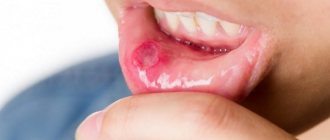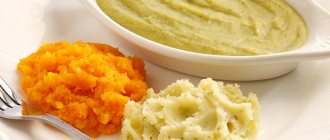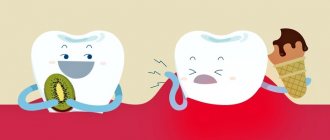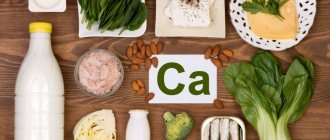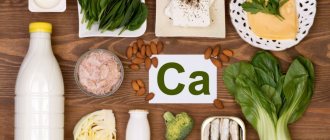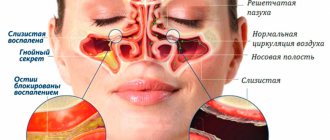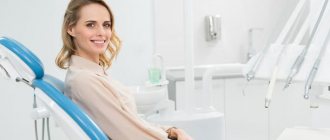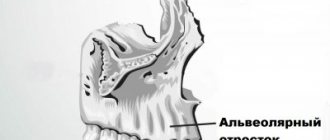A jaw fracture is one of the most common injuries. It occurs in 35% of all fractures. Most often the lower jaw is damaged. This is accompanied by a violation of chewing and swallowing functions. In this article we will talk about what nutrition should be like in case of a jaw fracture.
Proper nutrition promotes rapid recovery
First aid
An obligatory step is to apply a sling-shaped bandage to the jaw.
A broken jaw causes serious harm to health. Pre-medical intervention should be immediate.
First aid for a broken jaw is as follows:
- Stop bleeding. A tampon made from a clean napkin should be pressed onto the wound. If blood continues to flow, an ice compress should be applied to the fracture site.
- Anesthesia. It is allowed to inject the patient with 500 mg of Analgin, 750 mg of Naproxen, or 1-2 ml of Revalgin.
- Immobilization of the jaw. To do this, you can use a ruler or a plate. You can secure a homemade splint using a sling bandage.
Note! If necessary, the patient is given cardiopulmonary resuscitation. After providing first aid, you need to call an ambulance or transport the victim yourself to the hospital. Further treatment is carried out in a hospital.
What does a doctor do
Therapeutic tactics depend on the degree of injury
Therapy consists of the following:
- combination of jaw bone fragments;
- fixation of debris using a special tire;
- creating optimal conditions at the site of injury for bone restoration;
- carrying out restorative, antimicrobial and preventive treatment.
If necessary, the doctor performs surgery. If the destruction of the jaw bone leads to facial injury, complex plastic surgery is performed. During the operation, jaw and facial prostheses are used.
Content
- Mechanism of bone repair
- Useful products for fractures
- General principles of nutrition for fractures
- Nutrition for a broken leg or spine
- Nutrition for rib fractures
- Nutrition for broken arm bones
- Foods that slow down bone healing
- Specialist help
A fracture is a complete or partial destruction of a bone. It becomes the result of excessive stress or a consequence of a decrease in bone strength due to certain diseases and age-related changes, leading to a decrease in bone density - osteoporosis.
Nutritional Features
A mandibular fracture can be double or triple. A person who has received such an injury is unable to eat solid food. Violation of chewing function leads to inhibition of reparative processes of bone tissue.
The main task of medical personnel is to organize adequate nutrition. The main feeding methods are presented in the table.
Table 1. Types of feeding:
| Feeding method | Description |
| If a person cannot open his mouth, then feeding is done using a special sippy cup equipped with a tube made of Teflon or rubber. The food temperature is 45-50 degrees. Food is served repeatedly, in small portions. |
| By means of a gastric tube (first table) | The device is inserted into the stomach through the lower nasal passage. Food is introduced using a special funnel or syringe. |
| Food is introduced into a vein by drip. The indication for such feeding is a violation of swallowing function. |
| Rectal | The patient is given nutritious enemas. The indication for such feeding is the inability to take food enterally. |
Note! Food is supplied using a tube for 1.5-2 weeks. After this, the patient is transferred to physiological oral feeding.
Foods that slow down bone healing
Along with healthy foods needed to speed up bone healing after a fracture, there are also those that slow down recovery.
Alcohol comes first on the list of harmful substances. It disrupts the process of callus formation and promotes the destruction of nerve connections. In addition, while intoxicated, it is easy to fall and get a new injury.
List of products to exclude:
- alcohol;
- semi-finished products;
- smoked, spicy, salty foods;
- strong coffee and tea;
- fatty food;
- sweet carbonated drinks.
Features of the second table
It is prescribed when the patient can open his mouth freely. Food should be served liquid, well-cooked, thoroughly pureed or passed through a blender. Number of meals - 5-6 times/24 hours.
A brief description of the second table is as follows:
- the consistency of the dishes is sour cream;
- calorie content - depends on the possibility of combining other diets;
- The period is transitional to the common table.
Principles of nutrition
What to eat if you have a broken jaw? The tablet provides information about what the patient’s menu should include.
Table 2. Basic principles of nutrition:
| What to include on the menu | Description |
| Food should be rich in minerals, vitamins, amino acids, carbohydrates, fats and proteins. |
| It is allowed to eat high-quality pasta. |
| Cellulose | It is recommended to eat oatmeal and buckwheat. |
| You can drink raw chicken eggs. |
| Fresh fruits and vegetables should be included in your diet. |
| Preference should be given to olive oil. |
Note! In order to increase nutritional value, it is recommended to dilute pureed food with broth or milk.
Food for the period of splinting
The table tells you what you can eat if you have a fractured jaw during the period of splinting.
Table 3. Menu for the splinting period:
| Product | Description |
| It is advisable to cook it from poultry meat. The broth should be nourishing and rich. |
| Meat broth soup | All ingredients need to be boiled well and then passed through a blender. An essential component of the soup is cheese. |
| Before preparing juice, you need to remove the skin from tomatoes. |
| Drinking dairy products | It is recommended to eat fermented baked milk and kefir. |
Drinking whole milk is not recommended. This is due to the viscosity of the product, which quickly coagulates and contributes to the “stickiness” of saliva. It is better to add milk to tea or coffee. The grains of pureed solid food should resemble semolina.
Recovery period
The duration of the rehabilitation period for a fracture of the lower jaw is 30-60 days.
The patient's menu should include foods enriched with:
- calcium;
- zinc;
- phosphorus;
- vitamins.
Every day the patient should eat at least 150 grams of meat. You need to first boil it, then grind it in a blender, then dilute it with bone broth. This paste contains useful microelements that help accelerate the healing of deformities.
What to give up
The label lists foods that should be avoided during treatment.
Table 4. Prohibited products:
| Product | Why is it harmful? |
| Prevents cells from forming cartilage and bone tissue and promotes bone destruction. |
| Margarine | Inhibits the process of calcium absorption. The element does not have a beneficial effect on the body and is quickly eliminated from it. |
| High-calorie products that do not contain beneficial elements. |
| Chocolate | The product contains “bad carbohydrates”. |
How to cook food
When the maxillofacial bones are fractured, the process of chewing food and swallowing is disrupted, so in such cases experts recommend consuming liquid or semi-liquid food.
Over time, as swelling and pain decrease, the patient can gradually switch to eating pureed and mushy foods. The most suitable option for moderate chewing disorders is dietary table No.1.
Why can our articles be trusted?
We make health information clear, accessible and relevant.
- All articles are checked by practicing doctors.
- We take scientific literature and the latest research as a basis.
- We publish detailed articles that answer all questions.
In this case, the menu is compiled on the principles of the maximum amount of protein and microelements. The products are boiled or steamed, then passed through a meat grinder. Dishes are brought to the required consistency by diluting them with broth, vegetable broth, water or milk.
Patients with a broken jaw have a problem chewing bread, so bakery products are introduced into the diet only in the form of ground crackers, diluted to a liquid sour cream with milk or broth.
The menu for a patient with a broken jaw is varied. You can easily organize a complete and balanced diet from it. The main thing is to take into account the general condition and physical activity of the patient and adjust the menu as the patient recovers.
Use of enteral formulas
The products contain amino acids and vitamins necessary for the patient.
For a fracture of the lower jaw, it is recommended to eat the following enteral mixtures:
- Nutrilon;
- Nutrizon;
- Nutridrink.
The mixtures are available in dry and liquid form. Dry products must be diluted in boiled water.
Note! Enteric mixtures have a beneficial effect on the process of bone fusion. The beneficial elements contained in this diet are well absorbed by the body.
Nutrilon mixtures
When producing enteric mixtures, the manufacturing company uses the innovative Immunofortis system. The products are produced in jars of 400 and 900 grams. The best enteric mixtures for people with a jaw fracture are presented in the table.
Table 5. The best Nutrilon mixtures:
| Product | Description |
| It contains special fatty acids. |
| Nutrilon lactose-free | The mixture is recommended for people suffering from lactose intolerance. |
| Nutrilon fermented milk | The composition contains lactic acid bacteria, which have a beneficial effect on the functioning of the gastrointestinal tract. |
| The product prevents constipation. |
Nutrizon mixtures
A nutritional mixture with a high protein concentration and a balanced composition.
A brief description of this food looks like this:
- calorie content - 100 kcal/100 grams;
- proteins - 4 grams;
- fats - 3.9 grams;
- carbohydrates - 12.3 grams.
The best Nutrizon mixtures are presented in the table.
Table 6. Recommended Nutrizon mixtures:
| Product | Price |
| 520 rubles. |
| Nutridrink Advance Nutrizon | 554 rubles. |
| Nutrizon Energy with dietary fiber | 632 rubles. |
Nutridrink mixtures
The table shows the main flavors of Nutridrink products.
Table 7. Nutridrink mixtures:
| Taste of the drink | Description |
| An excellent alternative for people who do not perceive flavoring additives. The product is an excellent source of protein. Safe for people hypersensitive to lactose. |
| The mixture covers 1/4 of the patient’s need for protein and beneficial nutrients. Helps restore strength, improves tone, improves mood. |
| Vanilla | Contains all the beneficial elements necessary for the patient. Liquid protein is quickly absorbed by the body. |
| The mixture helps restore strength, improves mood and improves tone. |
| The mixture normalizes the functioning of the gastrointestinal tract. Especially recommended for elderly and young patients. |
| Contains dietary fiber that improves intestinal function. The mixture also contains vitamins A, C, D, and replenishes magnesium and calcium deficiencies. |
Mechanism of bone restoration after fracture
Bone consists of mineral (calcium, phosphorus, trace elements) and organic (collagen) substances. Mineral components provide strength, and organic components provide elasticity of the structure.
When a fracture occurs, not only the bone itself is damaged, but also surrounding tissues: muscles, ligaments, blood vessels, nerve fibers. This complicates and prolongs recovery.
Our body is capable of self-healing damaged tissues. As a result of this process, new tissue is formed, the so-called callus.
The mechanism of callus formation is based on cell division of the periosteum, endosteum (the inner part of the medullary canal of the tubular bone), bone marrow and choroid.
The speed of recovery depends on the individual characteristics of the person: age, health status, lifestyle.
Proper nutrition helps speed up tissue healing for bone fractures.
Recommended vitamins
When a jaw fracture occurs, the patient needs the following vitamins:
- Group B;
- C;
- D;
- K.
The human body also needs magnesium, calcium, zinc and phosphorus. Vitamins for jaw fractures can be obtained not only from food. Additionally, taking tablet medications is allowed. The tablets also need to be crushed thoroughly.
Vitamins B1
This vitamin is also called thiamine. It does not accumulate in the body. It must be received daily.
The daily requirement for vitamin B1 looks like this:
- adult men - 1.5-2.4 mg;
- women - 1.4-2.3 mg;
- children - 0.6-1.8 mg.
Thiamine-rich foods are presented in the table.
Table 8. Products with vitamin B1:
| Product | Thiamine content (mg/100 grams) |
| Lentils | 0,5 |
| 0,49 |
| Millet | 0,42 |
| 0,38 |
| 0,3 |
| Liver | 0.3 (pork) and 0.5 (chicken) |
Vitamin B6
Found in products of animal and plant origin. With a mixed diet, the need for this vitamin is fully satisfied. B6 is well synthesized by intestinal microflora, its excess is excreted during urination.
Note! With a lack of magnesium, the vitamin is absorbed much worse.
The table shows foods rich in B6.
Table 9. Products with B6:
| Product | B6 content (mg/100 grams) |
| Beans | 0,9 |
| 0,8 |
| Tuna | 0,8 |
| Mackerel | 0,8 |
| 0,7 |
| Bell pepper | 0,5 |
Vitamin B12
This is an anti-anemic vitamin. The daily requirement is 3 mcg. The upper acceptable level is unknown. Recommended products are listed on the label.
Table 10. Products with B12:
| Product | B12 content (mg/100 grams) |
| 20 |
| 4,3 |
| Sea bass | 2,4 |
| Pork | 2 |
| 1,6 |
| Carp | 1,5 |
| 1,4 |
| 1 |
| 0,5 |
| Sour cream | 0,4 |
Vitamin C
Another name for this vitamin is ascorbic acid. The daily requirement for an adult varies from 70 to 100 mg. Foods rich in vitamin C are presented in the table.
Table 11. Products with vitamin C:
| Product | B12 content (mg/100 grams) |
| 1000 |
| 200 |
| Kiwi | 180 |
| 100 |
| 89,2 |
| Cauliflower | 70 |
| 60 |
| 60 |
| 60 |
Vitamin D
This element is necessary to normalize the process of bone formation and growth. The vitamin regulates calcium-phosphorus metabolism.
The daily requirement for this vitamin looks like this:
- adults - 10 mcg;
- children - 10-15 mcg;
- persons who have crossed the 60-year-old threshold - 15 mcg.
Vitamin D is found in eggs, sour cream, butter, chicken liver and sea bass.
Vitamin K
Takes part in the formation of bone tissue and maintains the functioning of blood vessels. The daily requirement is 0.2-0.3 mg. Foods rich in vitamin K are presented in the table.
Table 12. Vitamin K foods:
| Product | K content (mg/100 grams) |
| 482,9 |
| Salad | 173,6 |
| Onion | 166,9 |
| Cucumber | 16,4 |
| 13,2 |
| 7,9 |
| Pear | 4,5 |
| Apple | 2,2 |
| Banana | 0,5 |
Products with magnesium
This element is one of the most common in nature. Magnesium is an integral component of bones and tooth enamel. The daily requirement is 400-500 mg. Products rich in magnesium are presented in the table.
Table 13. Products with magnesium:
| Product | Magnesium content (mg/100 grams) |
| Soybeans | 249 |
| 170 |
| 157 |
| Peas | 107 |
Note! In the patient's body, the ratio of calcium and magnesium should be no more than 1:06.
Products with calcium
Up to 98% of calcium is found in bone tissue, tooth enamel and dentin. The daily requirement is 800-1000 mg. Elderly patients need to increase the daily dosage to 1200 mg. Calcium-rich foods are presented in the table.
Table 14. Products with calcium:
| Product | Calcium content (mg/100 grams) |
| 760-1005 |
| Brynza | 630 |
| Cottage cheese | 154 |
| 86 |
Basic diet
Often patients completely refuse to eat, since the slightest movement of a broken jaw brings severe pain. This problem is especially relevant in the first time after injury. But refusing to eat is fraught with complications that can affect the organs of the digestive system, as well as depletion of the entire body, which does not receive the microelements and energy it needs with food.
Properly selected recipes for dishes that can be consumed by a patient will reduce pain while eating, as well as saturate the body with nutrients.
In most cases, food should be thin enough to be sucked through a straw. One of the recommended dishes is chicken broth. After receiving an injury, this is the first food that it is advisable for the patient to eat.
But even with a fractured jaw, you can add variety to the patient’s diet. It is best to prepare soups whose ingredients can be ground through a sieve. It is best to mince the boiled meat from the broth in the soup several times or grind it in a blender.
Additional nutrition for the patient's body can be provided by dietary supplements. Many enteral formulas contain everything necessary to fully supply the body:
- vitamins;
- minerals;
- amino acids;
- fats;
- proteins;
- carbohydrates.
These specialty products are available either as a powder for making a nutritional shake, or in a ready-to-drink form - that is, as a drink. As a rule, such products have no contraindications, but it is still better to consult a doctor before consuming them. He can recommend the best complex for the patient. Even if the patient uses enteral formulas, he still should not refuse to eat. Eating foods in liquid form (puree soups, liquid grated porridges) will keep the digestive system normal.
In some cases, the doctor recommends tube feeding. This is necessary if a person has impaired not only chewing, but also swallowing function. The tube allows food to be delivered directly to the digestive system. If these organs are not damaged and function normally, then this method of feeding is preferable.
Sample menu for the week
The patient should receive a sufficient amount of vitamins and minerals within a week. The sign shows a sample menu. It can be varied according to your own taste.
Table 15. Sample weekly menu:
| Day of the week | Breakfast | Lunch | Dinner | Afternoon snack | Dinner |
| Monday | 200 grams of oatmeal cooked with milk, a cup of tea with milk. | 1 egg, applesauce. | A bowl of bone broth soup, vegetable puree, a glass of tomato juice. | Any boiled fish, pea puree | Broccoli, fresh vegetables, a glass of carrot juice. |
| Tuesday | Millet porridge boiled in milk, a glass of apple juice. | Any fruit. | Fish soup with cheese, broccoli. | Cottage cheese, a glass of kefir | Vegetable puree, 150 grams of rabbit meat, a cup of green tea. |
| Wednesday | Corn porridge, boiled in milk and seasoned with a piece of butter, a cup of tea. | Berry mousse. | Vegetable soup cooked in beef broth, 150 grams of meat, any vegetables. | Carrot puree, a cup of green tea. | Boiled fish, Brussels sprouts. |
| Thursday | Oatmeal with milk, 100 grams of cheese. | Creamy dessert. | Chicken broth, 150 grams of any meat, pea puree. | Applesauce, a glass of freshly squeezed juice. | 200 grams of cod, rice. |
| Friday | Buckwheat porridge, a cup of tea with cream. | Pear puree, a glass of freshly squeezed juice. | Pea soup, 200 grams of beef, mashed potatoes, a glass of vegetable juice. | Berry mousse, 1 glass of jelly. | Vegetable puree, 200 grams of crab meat. |
| Saturday | Corn porridge boiled in milk, 100 grams of any cheese, a cup of coffee with milk. | 1 banana, a glass of freshly squeezed berry juice. | Soup with any cereal, 200 grams of carp, any pasta. | 200 grams of cottage cheese. | Rabbit meat, broccoli. |
| Sunday | Lentil porridge cooked in milk, a cup of green tea. | Applesauce. | Tomato soup, 200 grams of any meat, mashed potatoes. | 100 grams of Dutch cheese, a glass of tomato juice, berry mousse. | Rice, 200 grams of boiled cod. |
Feeding methods
After this injury, the patient is in the hospital and his menu for a jaw fracture complies with all the rules. Methods of nutrition depend on the severity of the fractures received. There are many methods of feeding the victim:
- Oral nutrition. This is the best and natural method of eating food. The patient uses the usual set of dishes and cutlery only if he is able to open his mouth independently. He is first assisted by a medical professional and then learns to eat without any assistance.
- Nutrition through a special tube. In case of injuries with complications, feeding occurs using a tube. The feeding procedure with this device is carried out only by doctors or nurses. The probe is inserted into the nasal passage and then into the esophagus and stomach. A special mass is drawn into a syringe and given to the patient in small portions. Feeding occurs at least five times during the day. Most of the food is delivered at lunchtime, and less before bed. This method is used for two weeks, after which the transition to a sippy cup occurs.
- Feeding through a sippy cup. If the patient has had bimaxillary fastening of jaw fragments, that is, a two-jaw bandage has been applied, then a sippy cup with a straw is used for nutrition. The tube is inserted into the passage between the teeth where there are none or next to the wisdom tooth. The total amount of food is consumed gradually with short breaks. It is recommended to feed in a sitting position if the person’s condition allows it. For nutrition, nutrient mixtures are used that are heated to 50 degrees. Sometimes, instead of formula, you can use baby food, for example, fruit or vegetable purees, as well as oatmeal.
- Intravenous nutrition. After receiving injuries, the patient may be unconscious, which means he will not be able to swallow or open his mouth on his own. In such cases, special nutrient solutions are used, which are administered extremely slowly and carefully, 3 times a day.
- Enema. Rarely, nutritional enemas can be used for nutrition. But this method has a big drawback - not all vitamins and substances are absorbed correctly.
Delicious recipe! How to clean a sofa from Sanya
Tube feeding
Often victims completely refuse to eat, since any movement of the jaws causes severe and sharp pain. This problem is especially acute in the very first days after injury. But refusing to eat food can create problems that affect the digestive system, causing exhaustion of the body, which does not receive the required dose of important vitamins, microelements and energy. Also, refusal greatly slows down the rehabilitation process, so you will have to force feed for some time using special equipment or on your own.
Oral hygiene
Antiseptics are used to rinse the mouth
When a patient is hospitalized, hygiene procedures are carried out by a doctor.
The instructions look like this:
- Rinsing the mouth. Antiseptic solutions are used for this.
- Cleaning food debris from tires and teeth. The procedure is performed with anatomical tweezers.
- Repeated rinsing of the vestibule of the mouth.
- Tire flushing. To do this, use a brush on which antibacterial soap is applied.
At home, the patient must continue to rinse the mouth with antiseptics. It is advisable to use solutions of Furacilin and Chlorhexidine.
Assistive devices and additional activities
Simple additional remedies that can be used at home will help increase the patient’s comfort during recovery after a broken leg:
- Orthopedic insoles. They help not to overload the injured limb, relieve stress from bones and joints.
- Belt. Special straps are attached to the bed, so the patient receives additional support when sitting down or standing up. Patients with a hip fracture especially need such a device.
- Crutches or cane. Depending on the severity of the injury, in the early recovery period the patient may require assistance while walking. Auxiliary supports will relieve excessive stress from the limbs and give the patient confidence during movements.
Rehabilitation measures provide for a uniform increase in the load on the body. Initially, the doctor prescribes simple breathing exercises to the patient, which help saturate the body with oxygen and develop the respiratory system. Afterwards, exercise is added, which is aimed at developing general body mobility. After about a month, physical exercises are expanded and divided into two groups:
- general – aimed at improving the health of the whole body;
- special ones - restore the damaged area.
Properly selected gymnastics and a course of physical therapy restore blood circulation, strengthen muscles, resume motor activity and prevent complications.
